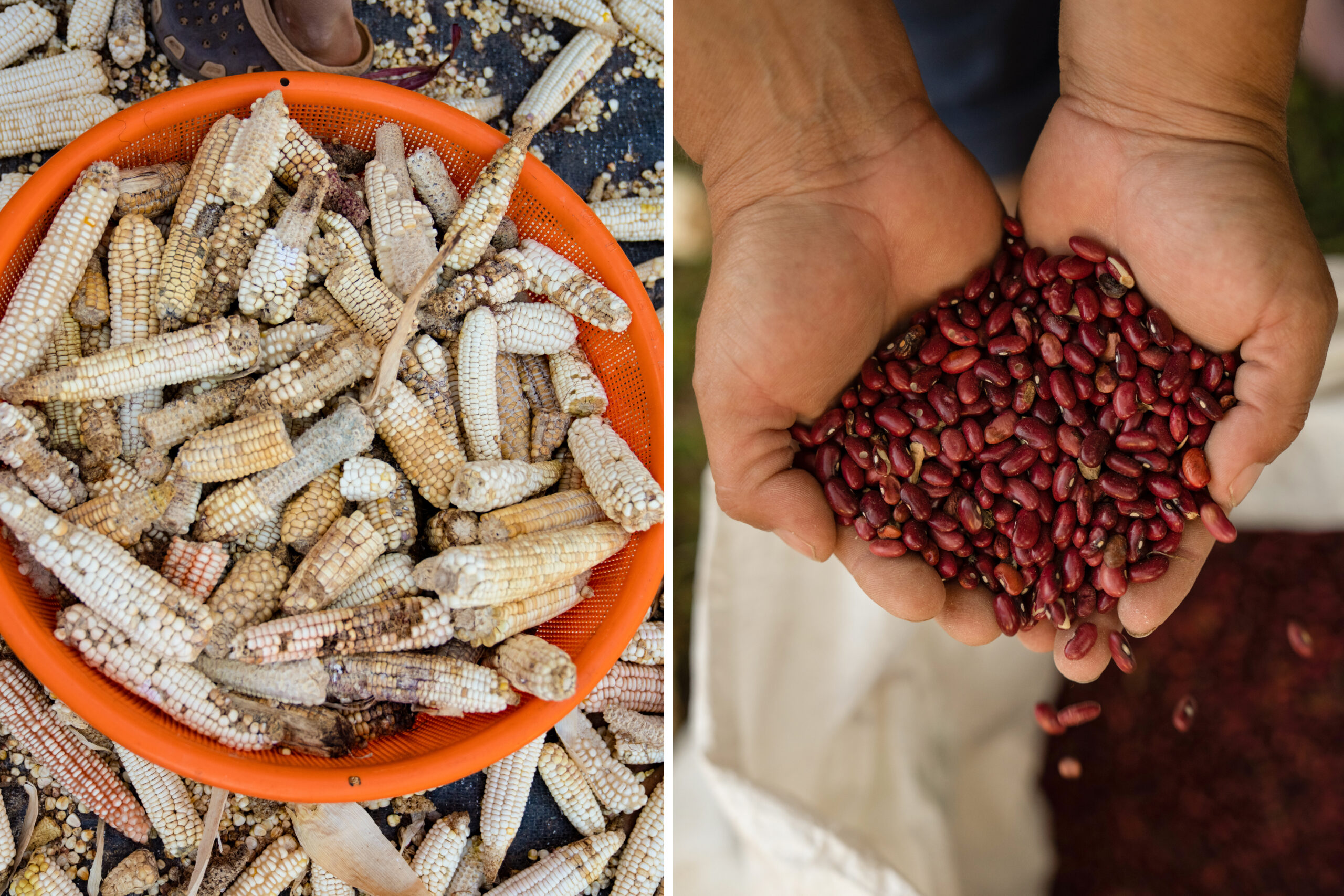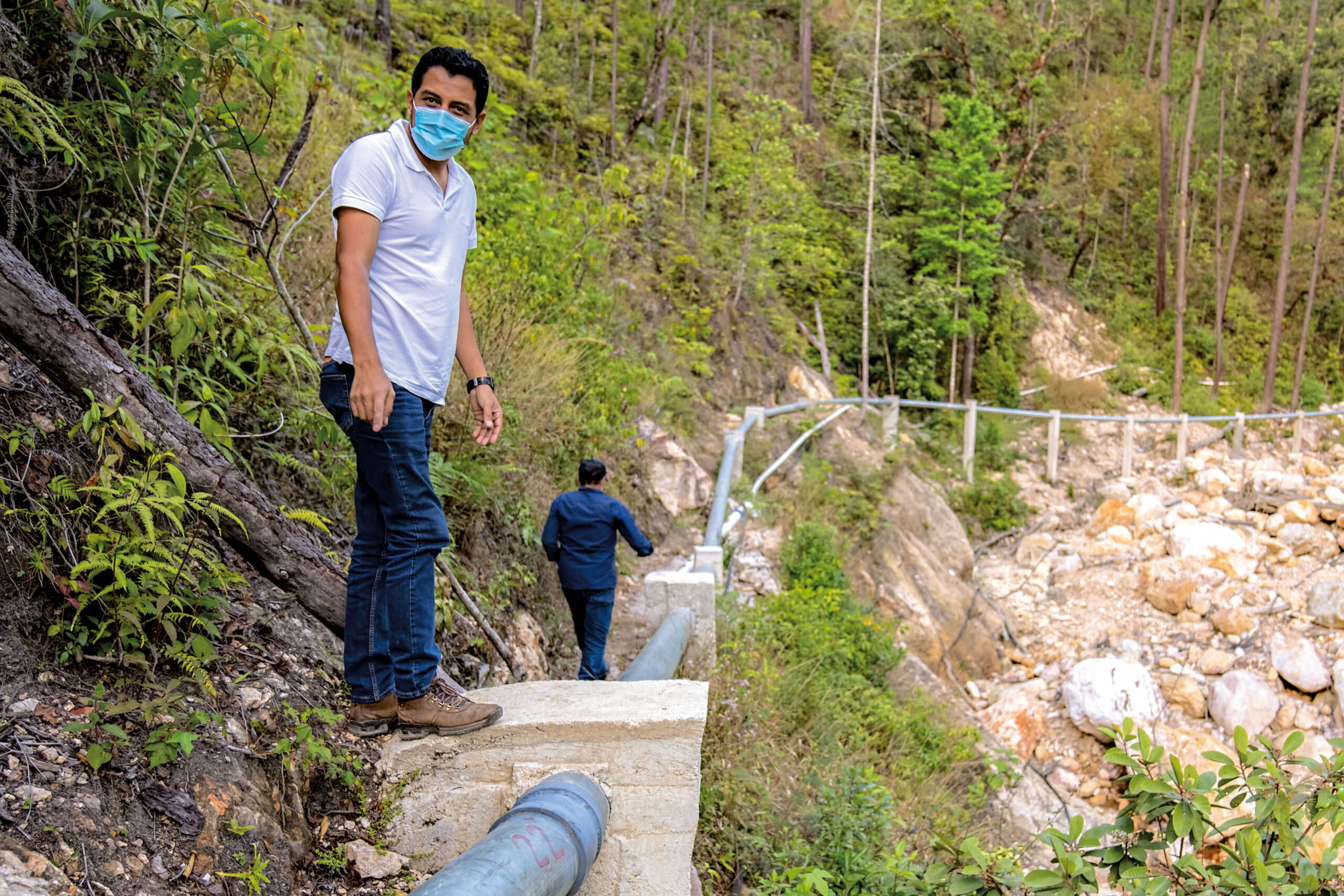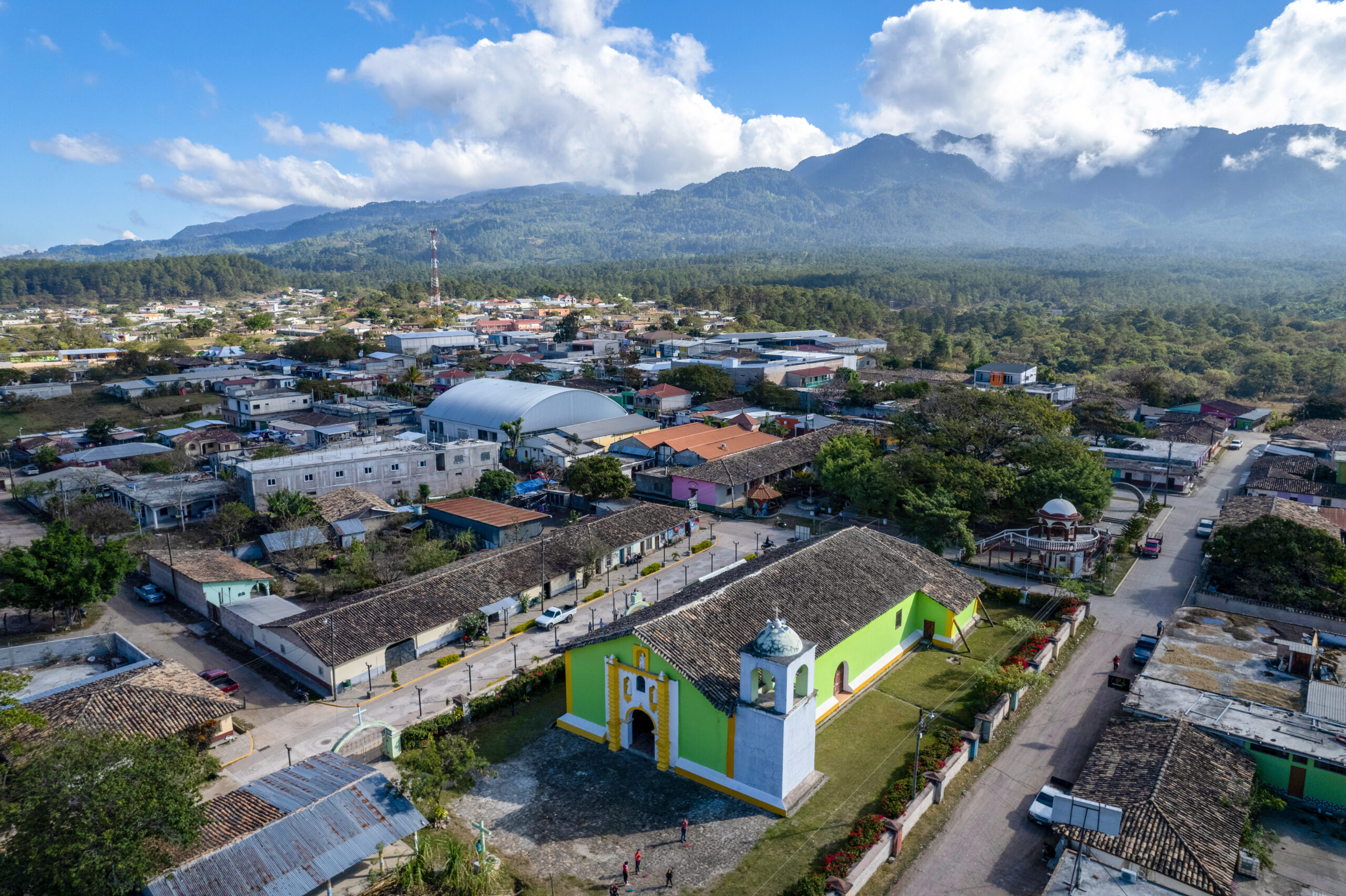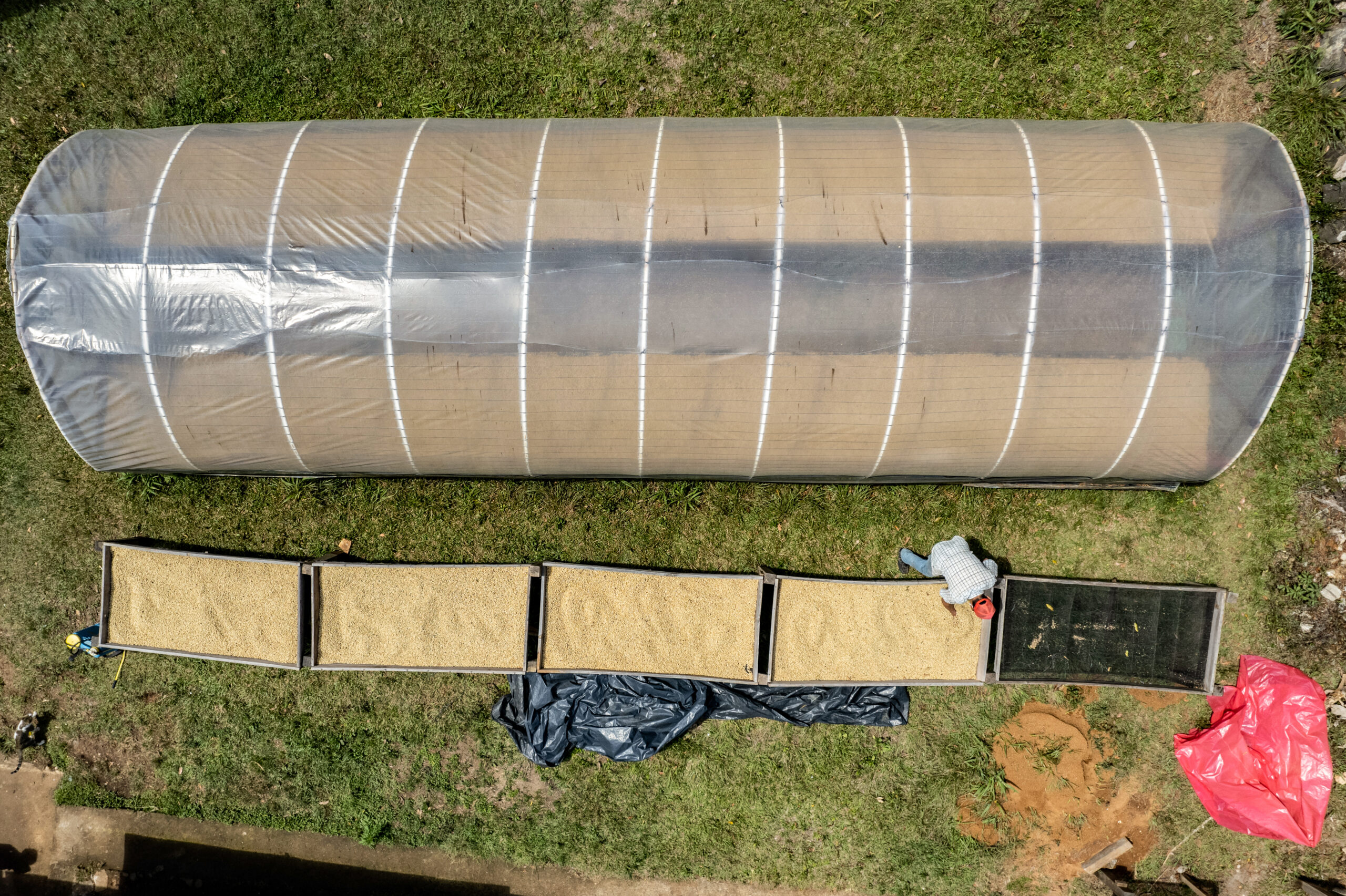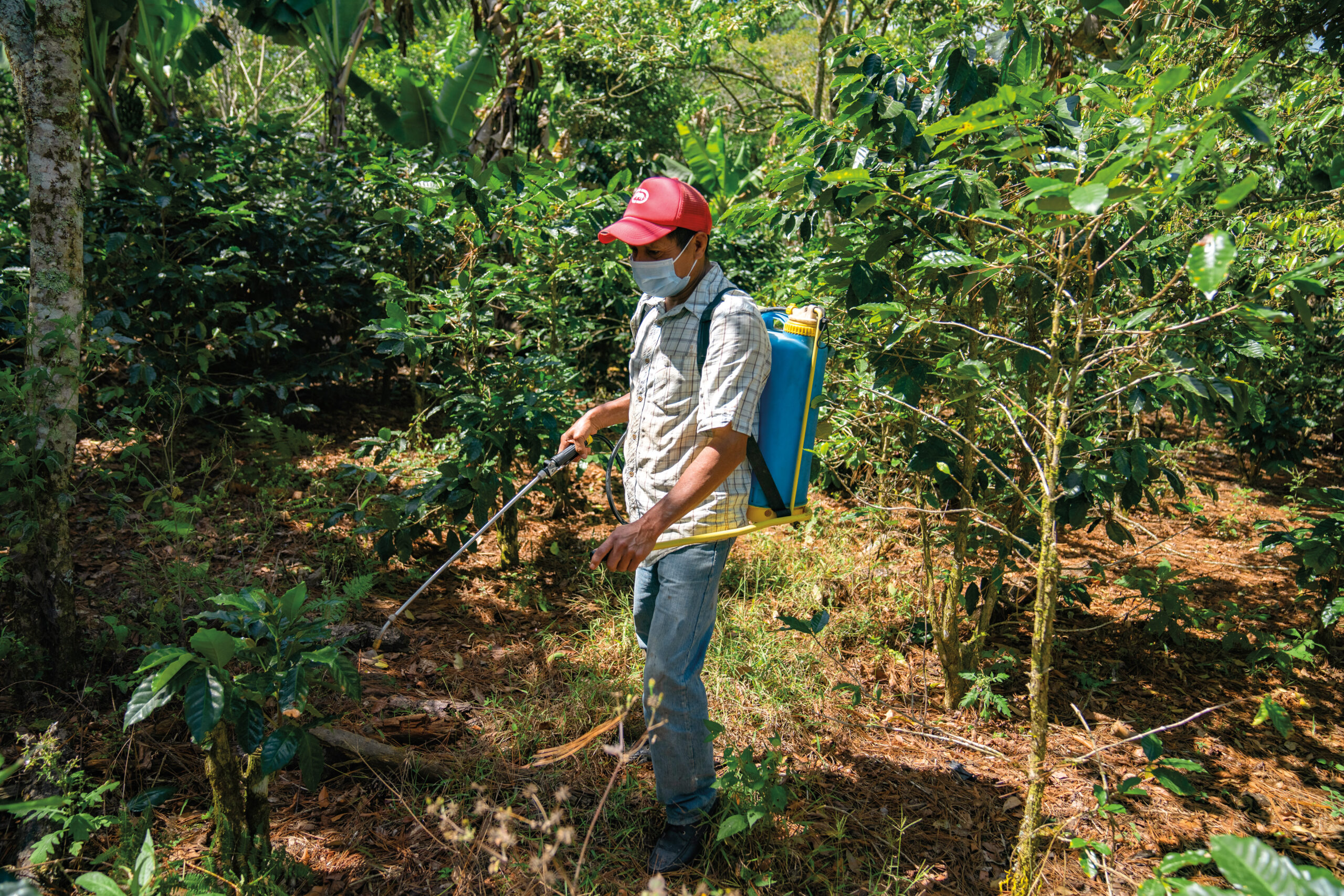This article is adapted from AQ’s special report on the Summit of the Americas | Leer en español
SAN JUAN DE INTIBUCÁ, Honduras — Should I stay or should I go?
That was the dilemma Honduran coffee farmer Otilia Aguilar faced when in 2017 when her entire crop succumbed to coffee rust, a deadly fungus that is now spreading faster across Central America due to rising temperatures. Destitute and discouraged, Aguilar and her husband considered joining the exodus of Hondurans seeking better lives in the United States.
But they lacked visas. They had little stomach for clandestine border crossings. And just the thought of leaving their four young children with relatives in Honduras as they toiled in El Norte broke their hearts. So instead of pulling up stakes, they doubled down.
They mortgaged their land to secure a small bank loan. After attending seminars on how to cope with unpredictable weather, they diversified by planting rust-resistant strains of coffee as well as corn, beans, mangoes, citrus and plantains, and by raising and selling piglets. The reconstituted farm has withstood droughts and tropical storms and produced enough for the Aguilars to pay off their loan and put food on the table.
“It was a good decision to stay put,” said Aguilar, who lives on the outskirts of San Juan, a farm town in the pine-covered mountains of western Honduras. “We worked very hard to make this happen.”
Although unfamiliar with the term, the Aguilars are practicing climate change adaptation. This means building up the resilience of communities and reducing their risks before they can be waylaid by droughts, tropical storms and hurricanes.
In most cases, adaptation boils down to commonsense, environmentally friendly adjustments—nothing revolutionary. Yet experts say that for Central America, an impoverished region with little margin for error, preparing for extreme weather is essential.
“The impacts from climate change are likely to get worse, so resilience and adaptation are going to be critical,” Michael Camilleri, executive director of the U.S. Agency for International Development’s Northern Triangle Task Force, told AQ.
Home to 45 million people, Central America is especially vulnerable due to its location in the Atlantic Ocean’s hurricane alley, its drought-prone “dry corridor” along the Pacific coast, and its dependence on agriculture, with millions of subsistence farmers barely eking out a living even when the weather is good.
Between 1994 and 2013, Honduras, Nicaragua and Guatemala were among the 10 countries most affected by extreme weather events, according to the Germanwatch Global Climate Risk Index. In 2019, after five years of droughts and torrential rains caused widespread crop failures, 1.4 million Central Americans required emergency food assistance, according to the World Food Program.
In 2020, the double whammy of Hurricanes Eta and Iota caused nearly $3 billion in damages in Guatemala and Honduras and sparked a new wave of migration to the United States.
Around that same time, rising tides along Honduras’ Pacific coast washed away buildings and streets in the seaside village of Cedeño. “Now, you need a canoe to get to the town square,” Sergio Palacios, director of the climate change office for Honduras’ Environmental Ministry, told AQ.
Even bigger challenges ahead
A February report by the UN Intergovernmental Panel on Climate Change (IPCC) predicted that by 2050, extreme weather could severely damage food security in Central America and that, in a worst-case scenario, rice, corn and bean production could fall by about 20%. By midcentury, crop losses and rising poverty in Central America and Mexico could produce up to 4 million climate-change migrants, according to the World Bank.
The cruel irony is that Central America can do little to roll back global warming because its own greenhouse gas emissions are minimal.
“We are not responsible for climate change, but we are very susceptible to it,” said Marlon Duron, a Honduran biologist for the International Center for Tropical Agriculture (CIAT). “The only thing we can do is try to adapt.”
So far, however, Central America and the rest of the world are not adjusting fast enough. The IPCC report focused heavily on adaptation, but said these efforts have been incremental and underfunded at a time when transformational changes are required.
The good news is that climate change adaptation is a bargain compared to the costs of cleaning up after crises. That’s why UN Secretary-General António Guterres insists that half of all new climate financing should go towards adaptation.
For farmers this can mean sowing hardier crop varieties or switching out chemical pesticides for organics to save money and replenish the soil. In cities it can mean moving slum-dwellers to less flood-prone areas, planting trees to prevent erosion, and better waste management. According to the Inter-American Development Bank, such adaptation projects cost one-fourth to one-sixth the price of repairing the physical damage caused by extreme weather events.
“This can be done,” said Jesse Festa, a project manager for The Nature Conservancy who has helped farmers, ranchers and fishers in Central America prepare for climate change. “You need some up-front capital but, overall, these are low-cost solutions.”
Residents of San Juan de Intibucá through the eyes of photographer Tomás Ayuso.
Behind the curve
Breathing hard and sweating, Ariel Benítez climbed over tree trunks, boulders, broken pipes and other debris that have all but buried a stream called Agua Amarilla. Benitez, 35, is the mayor of San Juan, Intibucá, the Honduran town near Otilia Aguilar’s rejiggered coffee farm. Dressed in jeans and hiking boots, he was inspecting the site of the town’s most recent natural disaster.
In October 2020, four hours of intense rain caused the side of a mountain to collapse, creating landslides that washed away 250 acres of crops, four bridges, and a system of weirs and pipes that brought water from Agua Amarilla and two other streams to 3,500 San Juan residents. As he surveyed the path of destruction and the trickle of water that used to be a stream, Benítez abruptly declared, “This is climate change.”
The calamity shocked San Juan’s 15,000 residents, and for several days, images of the flooding and washed-out roads made national newscasts. But Benítez, a coffee farmer before he was elected mayor in 2017, has always paid close attention to the weather, which seemed more erratic.
“People used to know when it would rain. Our grandparents would say, ‘Today is a good day to plant because it will rain,’” Benítez said. “But everything has changed. Now, the dry season is too long and when the rain finally comes, it’s overwhelming. It causes the coffee to mature too fast.”
That’s why Benítez was one of the first mayors in Honduras to create a climate change adaptation plan. Town officials and climate experts sponsored by USAID, CIAT and environmental groups held dozens of meetings with the community at which they gathered information from residents and farmers about local weather patterns, drainage, erosion and soil fertility.
Instead of a bureaucratic opus, the resulting plan consists of 29 reader-friendly pages that clearly identify San Juan’s biggest climate threats. Several points, such as waste management, are being implemented by the town, and agricultural engineers fanned out to rural areas to teach new techniques to famers.
Looking for a side hustle
Among them is Irene Hernández. He’s a 52-year-old San Juan coffee farmer who was initially skeptical about adaptation. But he had been losing more of his crop to coffee rust while two of his sons, who used to work on the farm, gave up and resettled in the U.S.
So Hernández gamely showed up at the seminars, where he learned how to make fertilizers and pesticides with the waste from de-pulped coffee berries, chicken excrement, leaves and other organics. The concoctions have fortified his coffee bushes, his soil and his wallet because he no longer shells out for expensive chemicals and sometimes sells these natural products to his neighbors.
“The other day I sold two canisters of pesticides for 500 lempiras,” Hernández said, referring to the $20 he earned in Honduran currency from the deal.
In fact, one of the adaptation plan’s recommendations is that farmers create side businesses as hedges should bad weather batter their crops. Several larger coffee farms now double as hotels in a drive to bring visitors to the region, which lies a few hours away from the ancient Mayan city of Copán.
But most new ventures are small. They include a group of 16 farmers, most of them women, who have built a wood-burning oven to make and sell bread in rural zones where there are no bakeries. Others have planted blackberries, oranges and pineapples and are fermenting the fruit into wine, which they sell for $6 a bottle.
Informal lending clubs have sprung up to provide small loans to help farmers get by until the next harvest. At a recent lending club meeting, held on a farmer’s back porch, several borrowers came forward with fistfuls of lempiras to repay loans as a volunteer treasurer carefully recorded each transaction in a spiral notebook.
“You learn how to be responsible with money and then you can borrow more if you really need it,” said Maidra Méndez, who lost a quarter of her coffee crop when Hurricane Iota roared through Honduras two years ago.
Elsewhere in Central America, adaptation techniques once dismissed as science fiction are catching on with small producers exasperated by extreme weather.
In Nicaragua, where dairy farmers have been hit hard by droughts, some have switched to silvopastoral ranching, which improves pastures by combining high-density fodder with tropical grasses and trees. They now spend less on feed because their cattle can graze year-round, while the yields and quality of their milk have improved.
In Belize, where coastal communities have seen fishing stocks decline, seaweed farming is taking root. This involves attaching pieces of seaweed to underwater rope lines in the ocean, then returning to collect the fully grown plants.
Growers can earn about $15 for a pound of dried seaweed, a nutrient-rich superfood that is also used in soap and cosmetics. Another benefit: Reduced fishing in and around seaweed farms appears to be bringing back fish, lobster and conch populations, said Festa of The Nature Conservancy, who has helped set up three seaweed farm cooperatives in Belize.
“We are looking to scale this up,” said Festa, who added that coastal communities in Nicaragua and Honduras also want in on the action. He estimated the start-up costs for a seaweed farm at about $80,000.
International support is key
Another project that will soon come online throughout Central America is Servir, a partnership between USAID and NASA to provide satellite imagery. The data can provide near-real-time fire alerts, identify potential frost areas to give farmers more time to prepare, and locate fish-killing microalgae spots at sea so fishing boats can avoid them.
Speaking to the UN Climate Change Conference in Glasgow, Scotland, in November, NASA Administrator Bill Nelson boasted that the project “connects space to the actual village.”
That sounds cutting-edge and adds to the impression that much is happening to shelter Central Americans from oncoming storms. Yet experts point out that the region’s adaptation efforts remain piecemeal and underfunded and often get no further than the drawing board.
One problem is that many Central American governments have been mired in corruption scandals and other controversies while providing little leadership on climate change. Local politicians, in turn, usually focus on age-old challenges like health care, education and water projects.
“There are still so many basic needs that climate change adaptation is not a high priority,” said Duron, the Honduran biologist with CIAT and the main author of the San Juan adaptation plan.
The Biden administration has pledged to spend $4 billion to address the root causes of poverty in Central America and to stem irregular migration. Yet only a small fraction of that amount is likely to be set aside for climate adaptation. For example, Biden’s $861 million budget request for Central America for fiscal 2022 includes just $33.5 million for climate change, with about half that amount earmarked for adaptation.
International development groups and multilaterals are stepping in with funding and training. However, the private sector is lagging even though it, too, has also been hit hard by climate change, said Gina Kawas, a fellow at the Woodrow Wilson Center for International Scholars.
Even the proactive citizens and town officials in San Juan are largely on their own. Of Honduras’ 298 towns and cities, San Juan is one of only about a dozen that have produced climate adaptation plans, even though a 2013 law calls on every community to do so. Neither Tegucigalpa, the capital, nor San Pedro Sula, the country’s largest city, have one.
Still, even one plan can carry a lot of weight—as Aguilar, the farmer who nearly fled Honduras for the U.S., can attest. On a recent morning she could be found using a wooden rake to spread her harvest of coffee beans over a plastic sheet so they could dry in the sun. Nearby, her four cipotes—Honduran slang for kids—frolicked with their dogs and cats and stripped kernels from ears of dried corn so mom could make cornbread.
Revamped to resist the wrath of Mother Nature, Aguilar’s farm now holds her family together.



